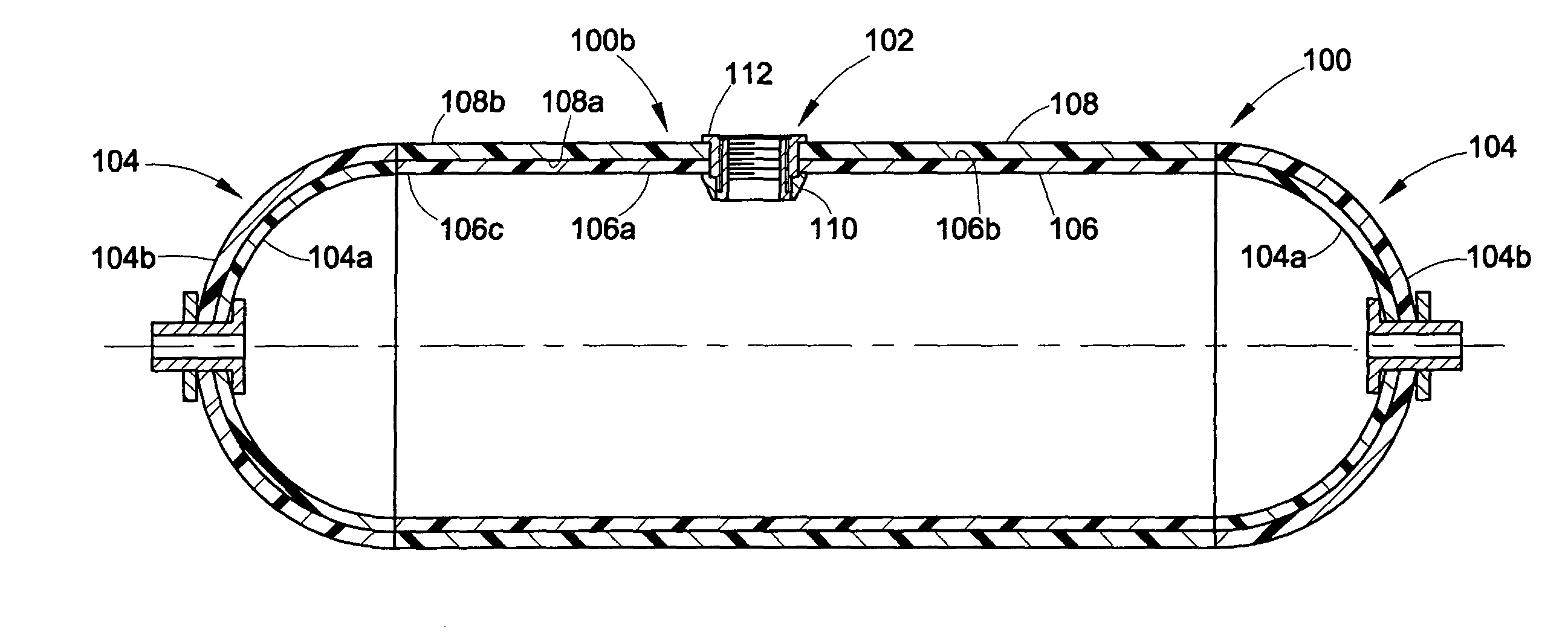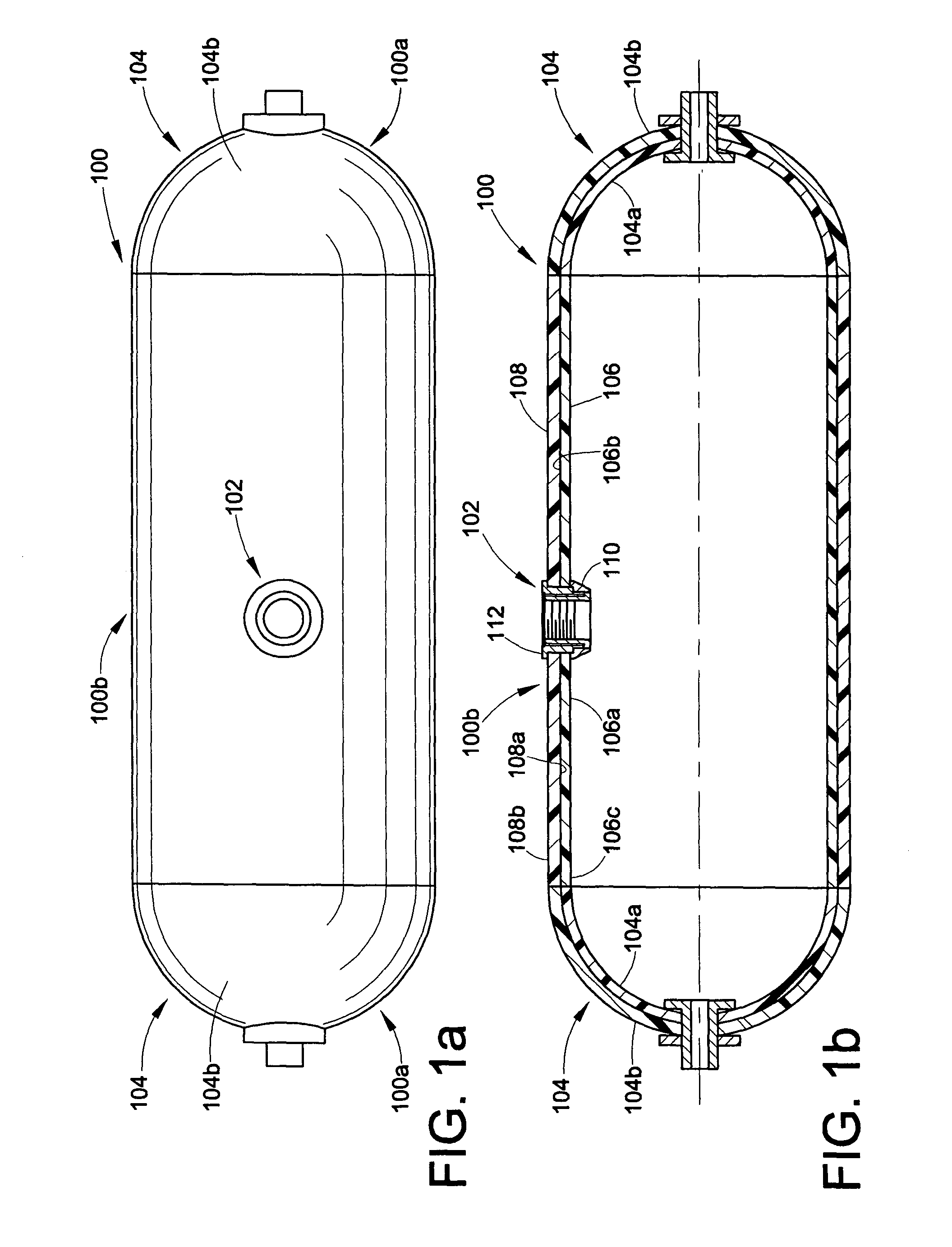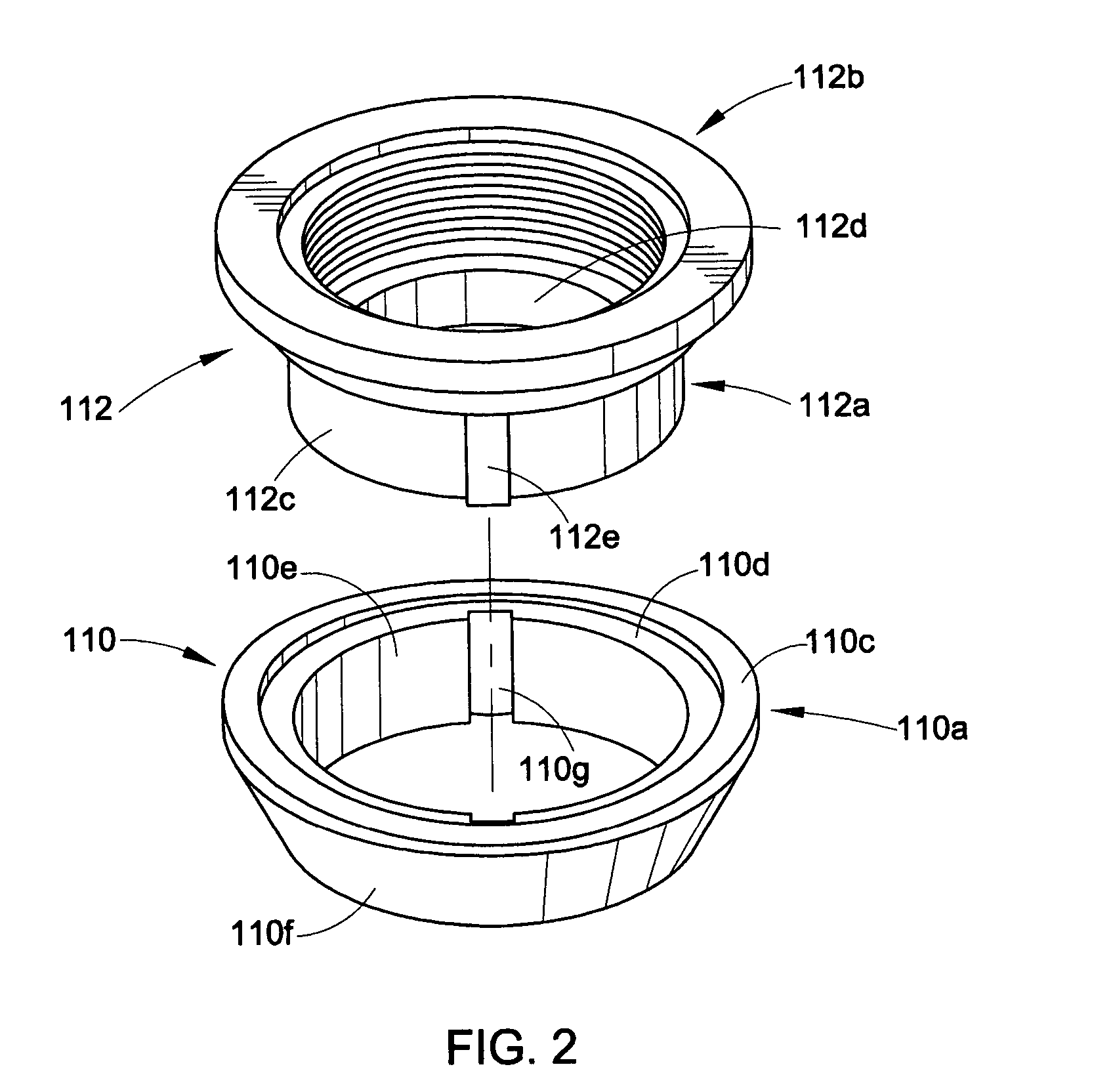Method of forming filament-reinforced composite thermoplastic pressure vessel fitting assembly
a technology of composite thermoplastics and fitting assemblies, which is applied in the field of fitting assemblies for filament-reinforced composite thermoplastic pressure vessels, can solve the problems of affecting the manufacture of vessels, pressure vessels cannot be added to the above conventional thermosets and thermoplastics, and the mechanical strength of pressure vessels is substantially weakened, so as to facilitate the resizing and/or relocation of ports, the effect of facilitating the manufacture of vessels
- Summary
- Abstract
- Description
- Claims
- Application Information
AI Technical Summary
Benefits of technology
Problems solved by technology
Method used
Image
Examples
Embodiment Construction
[0021]An exemplary filament-reinforced thermoplastic pressure vessel 100 according to the invention is shown in FIG. 1a. The vessel 100 defines a fluid-containment cavity and has at least one fitting assembly 102 formed in the vessel sidewall 100b. In the embodiment shown in FIG. 1a, the fitting assembly 102 is formed in the vessel sidewall 100b. However, it is considered apparent that plural fitting assemblies 102 in accordance with the present invention may readily be installed in a single vessel 100.
[0022]FIG. 1b is a cross-sectional view through the vessel 100 and the fitting assembly 102. The vessel 100 includes a pair of domes or endcaps 104, an inner thermoplastic liner 106, and an outer reinforcing layer 108. The thermoplastic liner 106 is generally cylindrical, having an inner surface 106a, an outer surface 106b, and first and second ends 106c that are each bonded to one of the domes 104, respectively. The outer reinforcing layer 108 is formed from commingled thermoplastic ...
PUM
| Property | Measurement | Unit |
|---|---|---|
| mechanical strength | aaaaa | aaaaa |
| corrosion resistance | aaaaa | aaaaa |
| external force | aaaaa | aaaaa |
Abstract
Description
Claims
Application Information
 Login to View More
Login to View More - R&D
- Intellectual Property
- Life Sciences
- Materials
- Tech Scout
- Unparalleled Data Quality
- Higher Quality Content
- 60% Fewer Hallucinations
Browse by: Latest US Patents, China's latest patents, Technical Efficacy Thesaurus, Application Domain, Technology Topic, Popular Technical Reports.
© 2025 PatSnap. All rights reserved.Legal|Privacy policy|Modern Slavery Act Transparency Statement|Sitemap|About US| Contact US: help@patsnap.com



